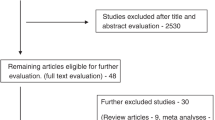Abstract
In autologous and allogeneic hematopoietic SCT (HSCT) neutropenia may be associated with severe infection. Immunodeficiency associated with GVHD and its treatment in allogeneic HSCT is also a risk for severe infection. In both periods, patients may develop severe sepsis with organ failure. To gain insights into treatment possibilities, HISTORY, a multicenter retrospective study reviewed HSCT patient records on mortality, organ dysfunction, platelet count and bleeding events. All transplantation records from 16 European centers were reviewed for 1.5 years. Of 2092 patients screened, 160 were documented for HSCT with respiratory and/or cardiovascular organ dysfunction because of sepsis and/or GVHD. Mortality was 53.1% at 28 days and 65.6% at 100 days. HSCT patients with sepsis and organ dysfunction are at highest risk of death (49.5%). Death from refractory septic shock was 15.2%, and it was 20% from respiratory failure and 64.7% from sepsis. Fewer than 3% of HSCT patients died from bleeding complications; however, individuals at increased risk of bleeding were excluded. Despite low platelet counts, an increased risk of bleeding could be established only if thrombocytopenia dropped below 13 × 109/l. Thus, there might be a therapeutic window for treatment strategies for severe sepsis in HSCT, such as drotrecogin alfa (activated).
This is a preview of subscription content, access via your institution
Access options
Subscribe to this journal
Receive 12 print issues and online access
$259.00 per year
only $21.58 per issue
Buy this article
- Purchase on Springer Link
- Instant access to full article PDF
Prices may be subject to local taxes which are calculated during checkout





Similar content being viewed by others
References
Champlin RE, Schmitz N, Horowitz MM, Chapuis B, Chopra R, Cornelissen JJ et al. Blood stem cell compared with bone marrow as a source of hematopoietic cells for allogeneic transplantation: IBMTR Histocompatibility and Stem Cell Sources Working Committee and the European Group for Blood and Marrow Transplantation (EBMT). Blood 200; 95: 3702–3709.
Soubani AO, Kseibi E, Bander JJ, Klein JL, Khanchandani G, Ahmed HP et al. Outcome and prognostic factors of hematopoietic stem cell transplantation recipients admitted to a medical ICU. Chest 2004; 126: 1604–1611.
Bach PB, Schrag D, Nierman DM, Horak D, White Jr P, Young JW et al. Identification of poor prognostic features among patients requiring mechanical ventilation after hematopoietic stem cell transplantation. Blood 2001; 98: 3234–3240.
Pène F, Aubron C, Azoulay E, Blot F, Thiéry G, Raynard B et al. Outcome of critically ill allogeneic hematopoietic stem-cell transplantation recipients: a reappraisal of indications for organ failure supports. J Clin Oncol 2006; 24: 643–649.
Bernard GR, Vincent JL, Laterre PF, LaRosa SP, Dhainaut JF, Lopez-Rodriguez A et al. Efficacy and safety of recombinant human activated protein C for severe sepsis. N Engl J Med 2001; 344: 699–709.
Glucksberg H, Storb R, Fefer A, Buckner CD, Neiman PE, Clift RA et al. Clinical manifestations of graft-versus-host disease in human recipients of marrow from HL-A-matched sibling donors. Transplantation 1974; 18: 295–304.
Pihusch M . Bleeding complications after hematopoietic stem cell transplantation. Semin Hematol 2004; 41 (Suppl 1): 93–100.
Pihusch R, Salat C, Schmidt E, Göhring P, Pihusch M, Hiller E et al. Hemostatic complications in bone marrow transplantation: a retrospective analysis of 447 patients. Transplantation 2002; 74: 1303–1309.
Nevo S, Swan V, Enger C, Wojno KJ, Bitton R, Shabooti M et al. Acute bleeding after bone marrow transplantation (BMT)—incidence and effect on survival. A Quantitative Analysis in 1402 Patients. Blood 1998; 91: 1469–1477.
Acknowledgements
We acknowledge the additional investigators and their teams on this study: E Alessandrino, Pavia; A Bacigalupo, Genova; G Ehninger, Dresden; B Hertenstein, Hanover; M Martelli, Perugia; D Niederwieser, Leipzig; R Schwerdtfeger, Wiesbaden; R Trenschel, Essen; and A Zander, Hamburg. We thank F Langer, F Kessler and M Belger for support with data analysis and statistics.
Author information
Authors and Affiliations
Corresponding author
Rights and permissions
About this article
Cite this article
Holler, E., Kolb, H., Greinix, H. et al. Bleeding events and mortality in SCT patients: a retrospective study of hematopoietic SCT patients with organ dysfunctions due to severe sepsis or GVHD. Bone Marrow Transplant 43, 491–497 (2009). https://doi.org/10.1038/bmt.2008.337
Received:
Revised:
Accepted:
Published:
Issue Date:
DOI: https://doi.org/10.1038/bmt.2008.337
Keywords
This article is cited by
-
The proteome pattern cGvHD_MS14 allows early and accurate prediction of chronic GvHD after allogeneic stem cell transplantation
Leukemia (2017)
-
Clinical characteristics and risk factors of Intracranial hemorrhage in patients following allogeneic hematopoietic stem cell transplantation
Annals of Hematology (2016)
-
Activated protein C in patients with septic shock: a consecutive case series
International Journal of Clinical Pharmacy (2012)



